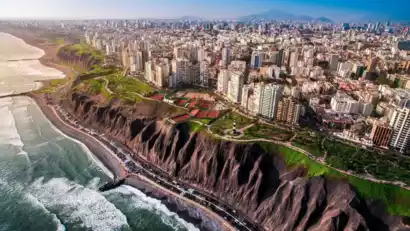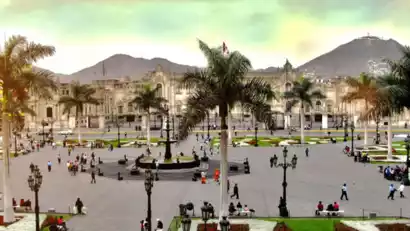Day 1: Meeting Day | Arrival in Buenos Aires
All day
Itinerary Presentation ※ First Encounter丨First Encounter with Magical South America
On the full-day gathering day in Buenos Aires, tourists will go to the gathering hotel on their own upon arrival. China-TravelNote provides paid airport pick-up service. If necessary, please contact customer service to add it.
丨 Recommended itinerary for the free gathering day:
Plaza de Mayo: Built in 1580, the square is a symbol of Argentina, bearing witness to the country's independence and urban development. The Casa Rosada (Argentine presidential palace) on the square is a Spanish-style rose-colored building. In 1873, President Sarmiento painted it pink to symbolize unity across political factions.
La Boca: This is the representative area of Buenos Aires' artistic atmosphere. The colorful houses on both sides of the street are very visually impactful. Each one looks like a carefully painted work of art, making it a great place to take photos.
El Ateneo: Hailed as the "second most beautiful bookstore in the world," this Argentinian bookstore chain boasts a gorgeous interior. Originally a theater, the renovation has preserved elements such as the stage and private rooms. Reading and shopping here feels like being in a palace of art.
Teatro Colón: Built in 1908, this is one of the world's most renowned theaters, boasting exceptional acoustics. Its architectural style blends diverse elements, resulting in a magnificent exterior and exquisite interior decoration.
丨Explore the world and step on the line:
What are the differences between visiting the line and normal travel?
Traveling is different from ordinary travel. There will be many unexpected factors that affect the experience, but there are also gains and losses:
1. Fully experience the folk customs of many places, and stepping on the lines requires more detailed and in-depth understanding;
2. They will visit many unknown places or tourist spots that are not on the regular routes;
3. Adventurousness: the itinerary may be changed at any time if unexpected attractions appear along the way;
4. It may involve interviewing special people, visiting, or participating in special events.
5. You will get a video of the line-stepping record edited by us.
Our product manager will communicate with you one-on-one. For more details, please click [Notice] → [Safety Tips]
How to get there:
The meeting point for this trip is Ezeiza International Airport (airport code: EZE) in Buenos Aires, Argentina. There are currently no direct flights from the country, so flights connecting through Madrid, Doha, Addis Ababa, and Paris are recommended.
Visa status:
You need to apply for a visa for this trip yourself. Peru and Argentina can enter without a visa with a US visa, so it is recommended to apply for a US visa


Day 2 Buenos Aires → El Calafate
·morning
Itinerary Presentation ※ Exploring the Argentine Capital
After breakfast, start your Buenos Aires City Walk.
Buenos Aires, the capital of Argentina, combines the charm of classical Europe with the vibrant energy of South America. Its urban fabric is steeped in centuries of history, graffiti, and the rhythm of tango, making it ideal for an in-depth City Walk exploration.
Following the tour guide, we walked along Caminito Street. On both sides were colorful tin houses (mostly bright colors such as red, yellow, and blue). The walls were covered with graffiti of tango dancers and urban life. Each building looked like a fairy tale cottage, and every photo was a retro blockbuster.
Take a stroll along Avenue Alvear, known as the "Champs-Élysées of Buenos Aires," flanked by century-old plane trees and elegant European-style buildings. Occasionally, you can see horse-drawn carriages passing by, making you feel as if you've traveled back to 19th-century Europe.
·afternoon
In the afternoon, take a flight to El Calafate (Airport Code: FTE), the flight time is about 3h20min
Upon arrival, check in to the hotel.


Day 3 El Calafate → Morena Glacier National Park
·morning
Itinerary presentation ※ Morenare Glacier
In the morning, we took a boat to Torres del Paine National Park. After arriving at the Morenare Glacier area, we took a boat on the lake to admire the magnificent glaciers up close. Then we arrived at the other side of Grey Lake and began the famous W-line hike.
We begin a short but pleasant hike from the base of the mountain through a forest of endemic trees, with views of the area's highest peaks (3,050m) and hanging glaciers.
·afternoon
After arriving in the Torres del Paine area, we took a leisurely walk along the turquoise shores of Lake Pejos.
Overnight in Chattan Township.


Day 4: Torres del Paine Trek Day 1: El Chalten → Laguna Capri → Campamento Poincenot
All day
Itinerary presentation ※Fitz Roy
Today is the first day of our hiking in Torres del Paine National Park. In the morning we arranged a pre-hiking meeting where the guide introduced the route, checked our equipment, and then set off.
From the town of El Chalten, follow a well-marked trail to Laguna Capri. This distance is approximately 7 kilometers and takes about 2-3 hours to hike. From there, continue toward Cerro Fitz Roy, enjoying stunning views of Fitz Roy along the way.
Fitz Roy is 3,359 meters above sea level. Because it is shrouded in clouds all year round, the local Tehuelche people call it "Chaltén", which means "smoking mountain".
We arrived at Laguna Capri at 10:00 noon, where we had a great view of Mount Fitz Roy and the surrounding mountains, and enjoyed lunch by the lake.
After lunch, we will proceed from Laguna Capri to Campamento Poincenot, approximately 4 kilometers away. Upon arrival at the campsite, we will set up our tents and take a short rest to acclimate to the surroundings.


Day 5: Campamento Poincenot → - Laguna de los Tres → Campamento Poincenot
All day
Itinerary presentation ※ Torres del Paine (Laguna de los Tres)
The 2-kilometer hike from the campsite to the Torres del Paine Lakes (Laguna de los Tres) involves an elevation gain of approximately 400 meters, and can take 2-3 hours. However, once you reach Laguna de los Tres and see the stunning reflection of Fitz Roy Peak in the lake, the effort is well worth it.
At noon, have a picnic by the Laguna de los Tres and enjoy the magnificent views of the surrounding glaciers, mountains, and lakes.
After lunch, we will return to Campamento Poincenot from Laguna de los Tres. On the way, we can enjoy the scenery again. After returning to the camp, we can rest early to recharge our energy for the third day of hiking.


Day 6: Torres del Paine Trek Day 3: Campamento Poincenot → Laguna Torre → Chatén
All day
Itinerary presentation ※ Torre Peak and Torre Lake
The hike from Campamento Poincenot to Laguna Torre is a long one, about 12-15 kilometers, and takes about 5-6 hours. Along the Río Fitz Roy, you'll enjoy stunning views of Cerro Torre and glaciers. Once you reach Laguna Torre, you'll be able to see icebergs floating on the lake and get a close-up look at Cerro Torre.
At noon, enjoy lunch at a suitable location near Laguna Torre, take a break and feel the tranquility and magnificence of nature.
After lunch, we will return to the small town of El Chalten, ending our pleasant hiking trip.


Day 7 Chatén → El Calafate → Lima
All day
Itinerary presentation ※ Chaten Town to Lima
Take the bus from Chaten back to El Calafate
Then take a flight from El Calafate (airport code: FTE) to Lima, the capital of Peru (airport code: LIM). The flight time is approximately 9h30min (including transfers).
Overnight at Four Diamond Hotel Lima.


Day 8 Lima → Cusco
·morning
Itinerary presentation ※ Lima to Cusco
After breakfast, take a flight from Lima (Airport Code: LIM) to Cusco (Airport Code: CUZ). The flight takes approximately 1 hour and 25 minutes. Arrive in Cusco at noon and check into the hotel.
·afternoon
After lunch, explore the old town in the afternoon
After arriving in Cusco, we officially started the second leg of our journey - the Inca Trail. Cusco is located in the southeast of Peru, at an altitude of 3,400 meters. It was once the capital of the Inca Empire and was known as the "Center of the World". As we stepped into this land, we were greeted by cobblestone roads, ancient walls, churches and other buildings. In the afternoon, we had a free tour where we could stroll around the ancient city, relieve the fatigue of the two-day journey, and prepare for the next leg of the journey.
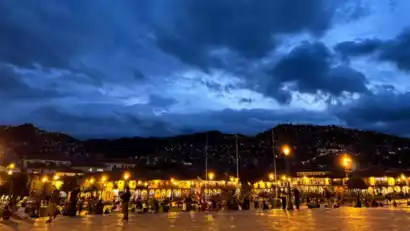
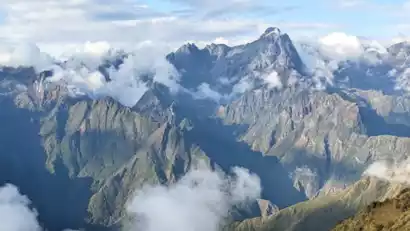
Day 9 Cusco Day Trip
All day
Itinerary Presentation ※ Cusco Exploration Tour
A day of exploration begins in the ancient Inca city of Cusco! Cusco is also known as the City of the Sun, partly due to its high altitude, which allows it to be bathed in sunlight for much of the year. Cusco was once the capital of the Inca Empire and the center of commerce, agriculture, and religion for the civilization. Today, in Cusco, you can still see the granite walls, monuments, and the Temple of the Sun, built by the first Inca king, Manco Capac, in the 11th and 12th centuries, testament to its past glory.
First, we'll visit Saksaywaman, a renowned ancient walled city complex in Peru known for its massive stone walls constructed with precise craftsmanship. We'll then head to Tambomachay, an ancient Peruvian site renowned for its intricate stone structures, ritual baths, and rich historical significance.
After lunch, we'll visit the Qenqo Temple, a center of worship for Inca ceremonies carved from rock. Atop the rock is a jagged passageway containing small, trapezoidal niches. We'll then proceed to Puca Pucara, a large military fortress with a fascinating array of large stone formations.
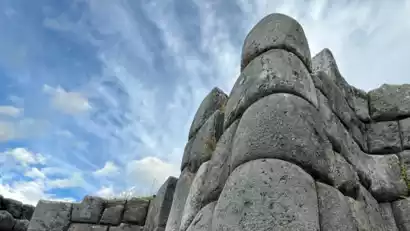
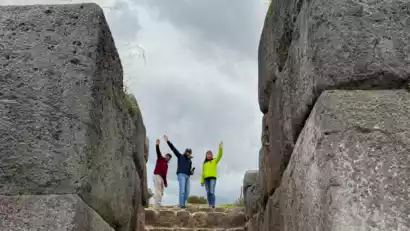
Day 10 Cusco → Ollantaytambo
All day
Itinerary presentation ※ Following the Ollantaytambo
The town of Ollantaytambo, located on the banks of the Urubamba River, about 90 kilometers northwest of Cusco, stands at an altitude of 2,792 meters. It was one of the Inca Empire's most important military fortresses. Besides its military functions, it also housed important temples, granaries, and an observatory.
Step back in time as you journey through the cobblestone streets, ruins, and quaint shops of Ollantaytambo. Climb the traditional mountain town of Chinchero for breathtaking views of the valley below. Discover the artisan traditions lovingly preserved by the region's inhabitants.
The Maras Salt Mine, located between Ollantaytambo and Cusco, flows from a naturally salted stream. From a single source, a trickle of water flowing down from the mountains creates a series of gravity-fed stills, each a few centimeters lower than the previous. This allows a steady but very slow flow of brine across its large, flat areas, drying into pure sodium chloride—table salt.
At the Moray archaeological site, we'll see the grandeur of the terraced fields, a prototype of Inca agriculture. Moray is a series of circular terraces used as an agricultural experimental center. The Incas used them to study the suitability of plants for new ecosystems. The overlapping circular stone rings widen as they rise, reaching a total depth of 150 meters.
Staying in Ollantaytambo tonight, about to start hiking!
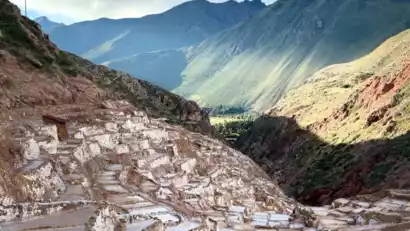
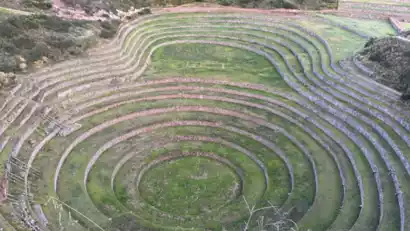
Day 11: Inca Trail Day 1
All day
Itinerary presentation ※ Laktapatta
The thrilling Inca Trail trek is about to begin. Departing in the morning, we'll be transported to its starting point at Km 82. We'll meet our porters and guides and begin our hike by crossing the Vilcanota River, traversing flat terrain. We'll then ascend, passing a viewpoint overlooking the magnificent Inca city of Laqueta Pata (2,750 meters). The hike continues on relatively flat terrain for approximately six hours, offering spectacular views of the snow-capped peaks of Mount Veronica and the astounding diversity of wildlife. Finally, we'll reach our first camp (3,000 meters), where our mountain chef will prepare a special dinner. We'll spend the night in a tent in the wilderness.
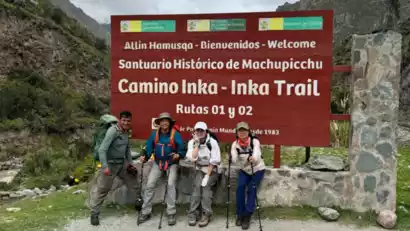
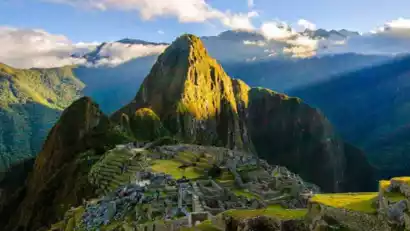
Day 12 Inca Trail Day 2
All day
Itinerary presentation ※ The highest point of the Inca Trail
Our second day of hiking begins early in the morning, enjoying the fresh air and cool shade of the mountain forest. We'll hike the Inca Trail to Warmihuañusca (Dead Woman Pass), Machu Picchu's highest point, at 4,200 meters. Along the way, we'll admire a variety of stunning scenery, including snow-capped mountains, the Andes, and jagged, dark peaks. After a break and some photo opportunities, we'll descend to Pacaymayo Campground, 3,600 meters (11,800 feet) above sea level, for lunch and a free afternoon to relax.
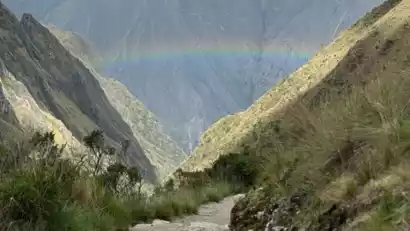
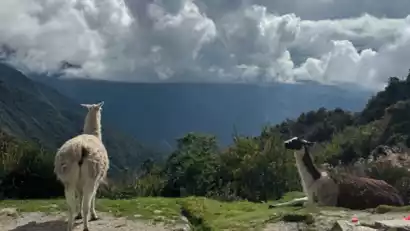
Day 13 Inca Trail Day 3
All day
Itinerary presentation ※ Salkantay Mountains
Visit Inca ruins on the Inca Trail. Today begins with a steep climb to Runkurakay Pass, offering stunning views of the Andes and alpine jungle. After a short rest, we'll descend to the Inca ruins of Sayacmarca and enter the cloud forest, home to colorful orchids and a variety of birdlife. After about an hour, we'll reach the Inca ruins of Phuyupatamarca (Town in the Clouds), where we'll be able to admire the majestic Salkantay Mountains. Afterward, we'll continue our descent for approximately three hours to Winayhuayna (Forever Young), our final campsite on the Inca Trail (2,100 meters) and our final night's stay. After dinner, we'll enjoy a traditional farewell ceremony.
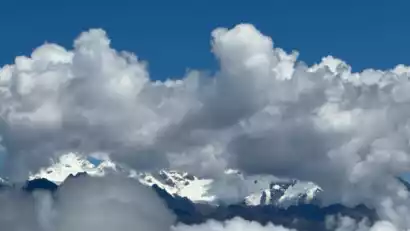
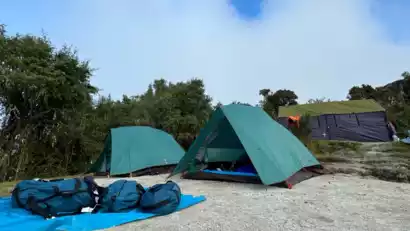
Day 14: Inca Trail Trekking Day 4
All day
Itinerary presentation ※ The last Machu Picchu
Today, we'll need to wake up early, have breakfast, and begin the final leg of our hike, which takes only three hours to reach the Sun Gate (2,730 meters). The walk from the Sun Gate to the heart of Machu Picchu takes some time, and the closer you get, the more you'll see its vastness and beauty. Many archaeologists believe that Machu Picchu was built as a temporary residence by the Inca King Pachacuti (1438–1472), the king who transformed the Inca civilization into an empire. Its remote location helped it escape Spanish destruction. In 1911, American Hiram Bingham discovered it, bringing it to global attention. The exact nature of Machu Picchu remains a mystery, and the current conclusion is the result of numerous speculations, rebuttals, and re-speculations.
After four days of hiking, we'll return by bus to the hot spring town at the foot of the mountain. After lunch, we'll take the train back to Ollantaytambo, our starting point. This 42-kilometer hike will surely be the most memorable of this trip.
In the afternoon, we returned to the hotel in Ollantaytambo to rest. The bliss of finally taking a hot shower overwhelmed me.
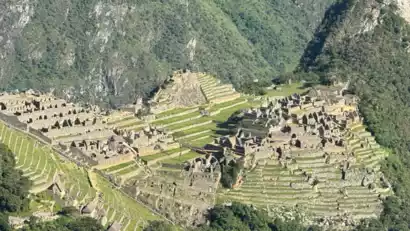
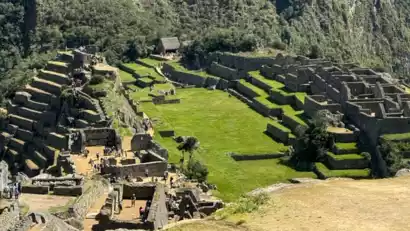
Day 15 Ollantaytaybo → Cusco → Lima Disbandment Day
All day
Itinerary presentation ※ Celebration banquet
Drive back to Cusco from the small town of Ollantaytabo.
We flew back to Lima from Cusco in the afternoon and had a celebration party in the evening so that everyone could share the wonderful memories of exploring South America together.
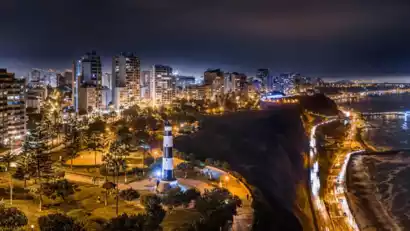
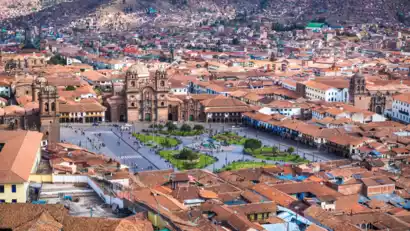
Day 16 Lima All Day Disbandment Day
All day
Schedule presentation ※ Disbandment date
Today is the day of disbanding. Everyone can go to the airport according to their flight time and officially say goodbye to this wonderful journey.
丨Recommended itinerary for free break day:
Plaza de Armas: Lima's birthplace and heart, it's also its spiritual and cultural center. Surrounding the square are buildings like the Government Palace, the Cathedral of Lima, and the Archbishop's Palace. Its central bronze fountain, built in the 17th century, is a popular venue for various events, including the Changing of the Guards.
Lima Cathedral: A Roman Catholic cathedral, construction began in 1535 and has undergone numerous restorations and reconstructions. It incorporates Baroque, Gothic, Neoclassical and other architectural styles. Its solemn interior also houses the coffin of Francisco Pizarro.
Miraflores Boardwalk: Built along the natural curve of the cliffs along the coast of Lima, it is an iconic part of Lima. It stretches for about 10 kilometers and offers stunning views of the Pacific Ocean along the way. You can also see people paragliding here.
